Quick and Easy No Peel Applesauce for Crockpot or Instant Pot
It’s September and apple season is in full swing here in the Midwest. Every year, we like to take advantage of the abundant apple orchards in our area and stock up to can enough applesauce for the year. This simple no peel applesauce is our favorite way to make it, and whipping it up in either a slow cooker or crockpot or an instant pot makes it almost entirely hands off.
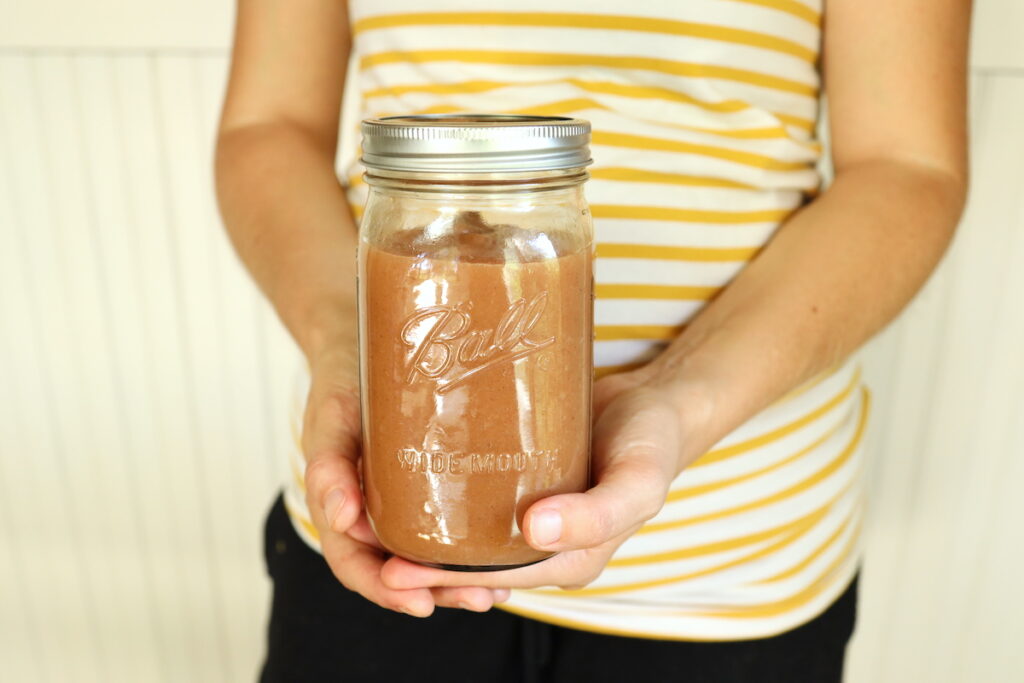
Why No Peel Applesauce?
For a long time, my favorite way to make applesauce was with one of those hand-cranked apple corer, slicer, peeler contraptions. While those are really fun and convenient, the big downside was that they peeled the apples. The peel of an apple is actually where most of the nutrients are and the flesh of the apple is comparatively relatively void of nutrients.
So, no need to remove that peel, simply core and slice those apples and they are ready to go for making the most delicious and nutritious no peel applesauce.
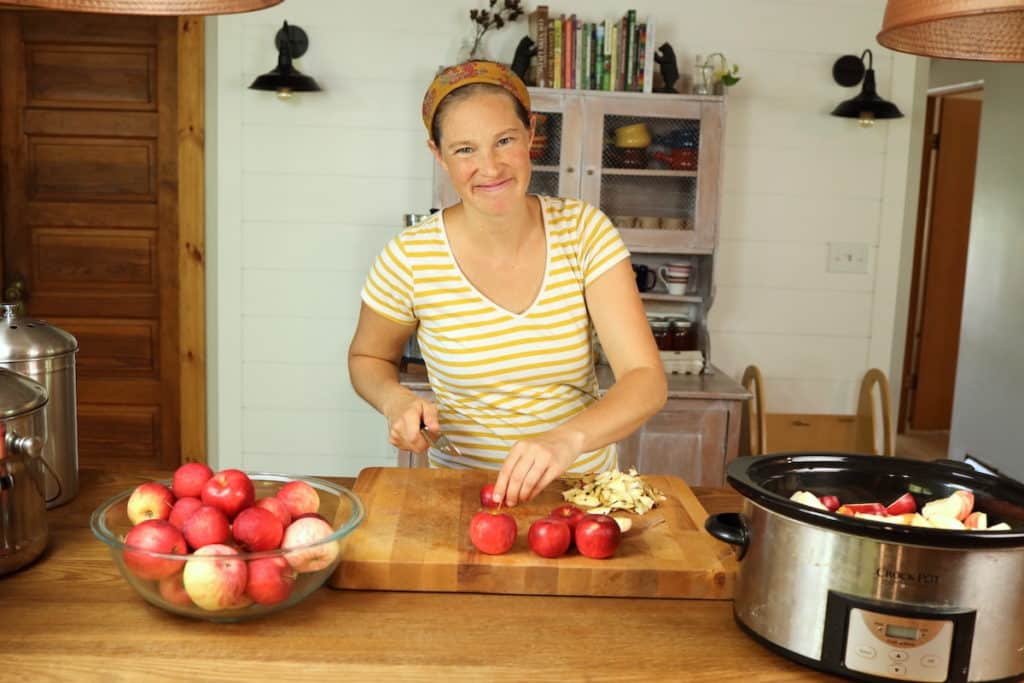
Nutrition in Peeled vs. No Peel Apples
An apple a day keeps the doctor away, right? Certainly, there has been scientific evidence linking apple consumption to a reduced risk of many poor health factors like cardiovascular disease, cancer, and obesity.
But what is it about an apple that results in those positive outcomes? Nutrition researchers attribute the significant levels of phytochemicals with strong antioxidant properties to be a big reason why consuming apples is good for health. But the catch is that the bulk of these phytochemicals and antioxidants are found in the skin of the apple.
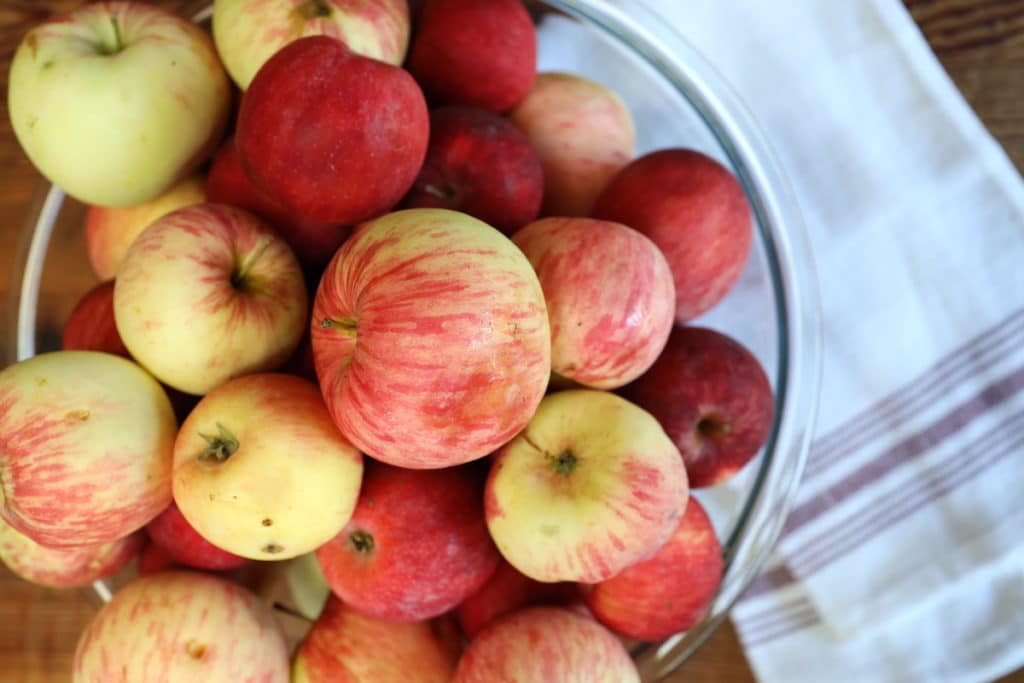
Furthermore, the skin of an apple also contains significantly more vitamins and minerals than the flesh. To name a few, an unpeeled apple contains roughly 312% more vitamin K, 70% more vitamin A, 35% more calcium and potassium, and 30% more vitamin C than an apple that has been peeled.
If that’s not enough, most of the fiber in an apple is found in the peel. By including the peel of an apple, the fiber content more than doubles!
What About Raw vs. Cooked Apples?
From what I have found, there was no significant nutritional difference between raw versus cooked apples. Some claim that there is a loss of nutrients and polyphenols when cooked, but they are still incredibly nutritious cooked or raw.
However, the big area where cooked apples have an advantage is their digestibility. When an apple is stewed, a special fiber called pectin is released. Raw apples still contain pectin, but when the apple is cooked, the amount of pectin is much more significant.
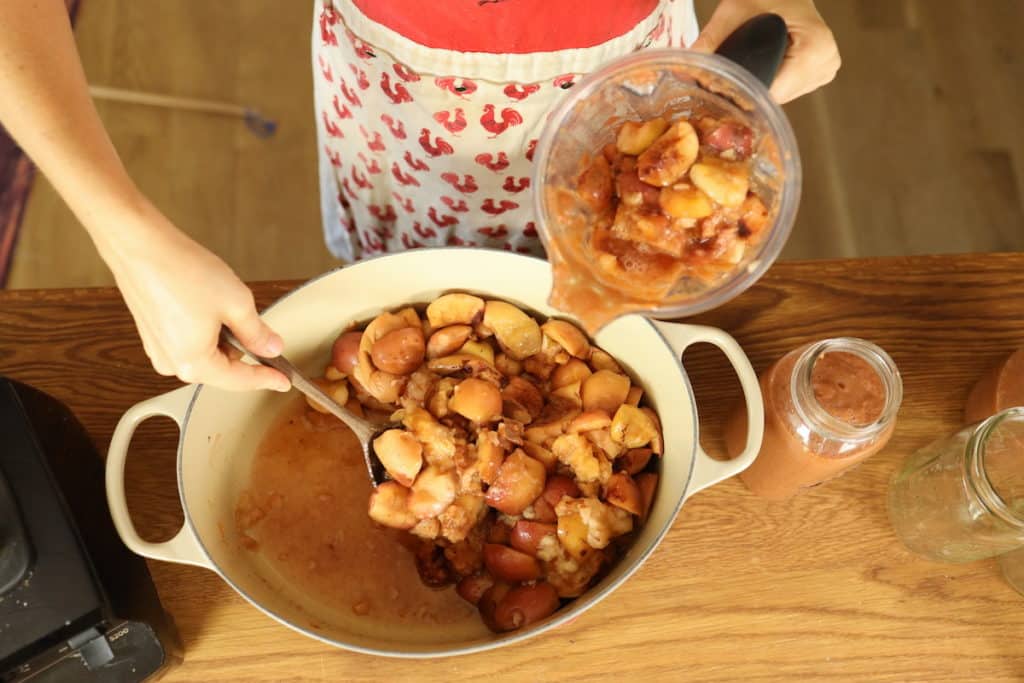
Pectin causes the stewed apples to form almost a gel like coating. Additionally, the pectin in stewed apples can help to modulate gut bacteria, reduce inflammation, and eliminate toxins in the gut. Also, cooking the apples makes them easier to digest because they are already partially broken down making it less work on the body to do so.
Frequently Asked Questions About Making No Peel Applesauce
Is it necessary to add a sweetener?
Most recipes out there call for the addition of some sort of sweetener to applesauce, whether that be white or brown sugar, honey or maple syrup. We have actually found added sweetener to be unnecessary and that the cooked apples are plenty sweet in themselves. A scoop of cinnamon and a pinch of salt is all that is needed to make a delicious applesauce. However, if you prefer extra sweet, feel free to add a sweetener as desired.
Are Organic Apples Important in No Peel Applesauce?
In one word, YES! According to the environmental working group’s research on pesticides sprayed on produce, apples come in at the 5th worst, or most highly containing pesticides. The goal of leaving the peels on in your applesauce is to keep the nutrients. But we don’t want those nutrients with a high dose of chemicals. Looking for organic apples is the best route to go when making this no peel applesauce. Local orchards often offer windfall apples at reduced price. These are our favorite for applesauce! Windfall apples are just as they sound – windblown off the tree – having minor blemishes and bruises that will never be noticeable in your applesauce.
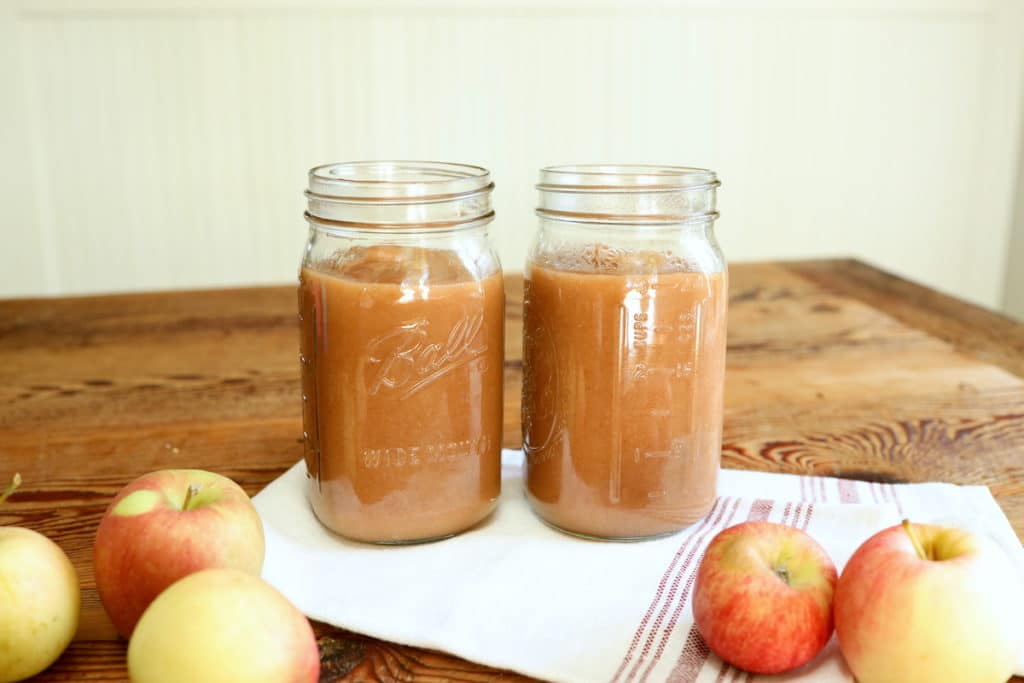
What Apples are Best to Use?
I don’t think there’s a wrong choice here. We have experimented making this applesauce with many different kinds of apples over the years, and it has turned out delicious every time. Also, this is a personal decision based on how sweet you like it. Cortland, Fuji, and Golden Delicious are great options on the sweeter side. While Jonamac, McIntosh, Ida Red, or Granny Smith will also be delicious with a little more tartness. And actually, our favorite way to make no peel applesauce is with a combination of different apples. Any and all options and combos turn out great!
What Can I do with the Remaining Seeds and Core?
There are a few options here but you definitely want to avoid just tossing them in the garbage! Apple cores can go in the compost, be fed to animals like chickens, or you can turn them into apple cider vinegar. This is a great recipe to transform those cores into apple cider vinegar.
How to Make No Peel Applesauce
Regardless of whether you opt to make applesauce in a crockpot/slow cooker or in the Instant Pot, the beginning of the process is the same.
Step 1 – Core and Chop Apples
Simply, core and chop the apples into large sections. I like to quarter them. From there you need to cook your apples.
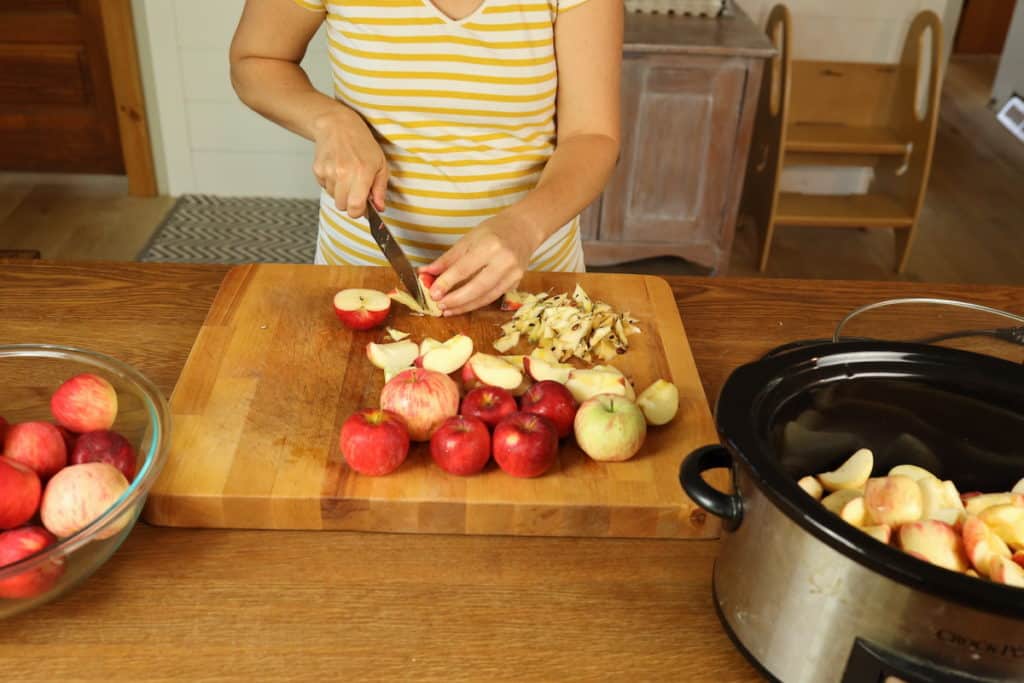
Step 2 – Cook Apples
Crockpot Method:
If you are cooking the apples in a crockpot, place all of your cut apple sections into your slow cooker. Then add cinnamon and salt on top of the apples. Cook on low for 6-8 hours or high for 3-4. You know they are finished when the juices have been released and the apples are very soft and easily mashed.
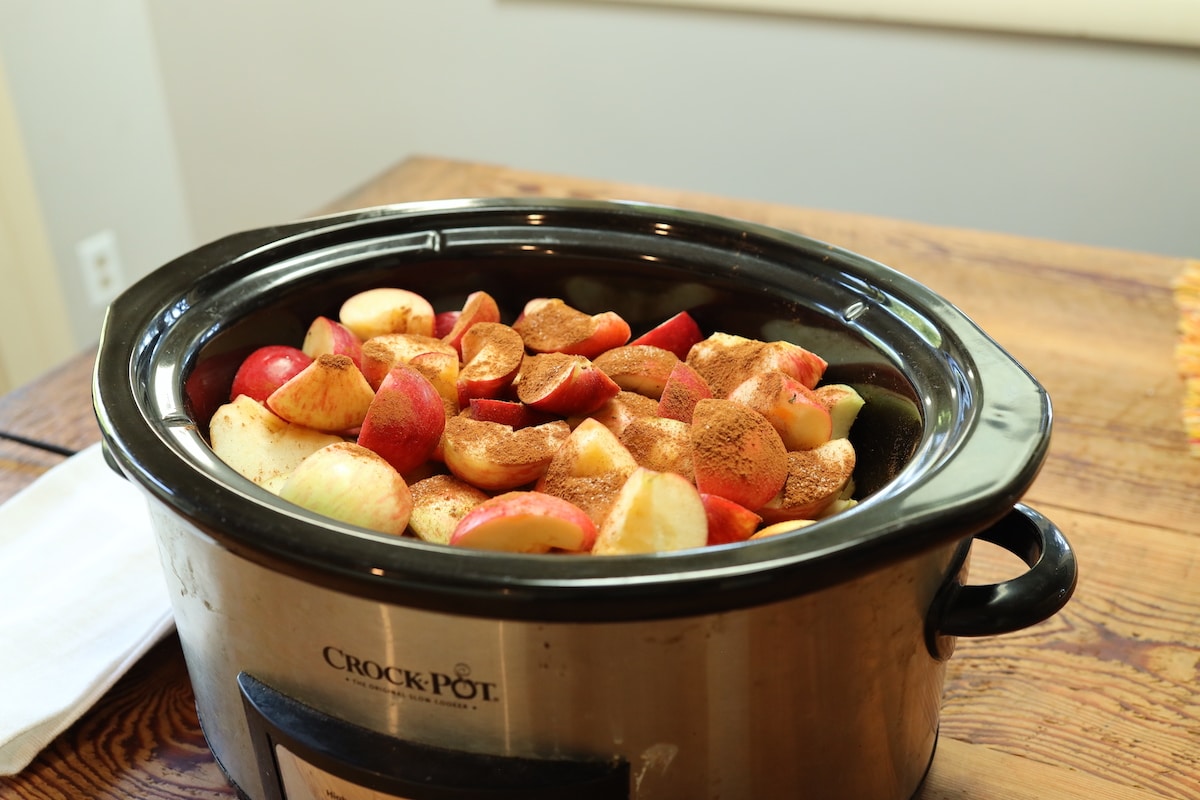
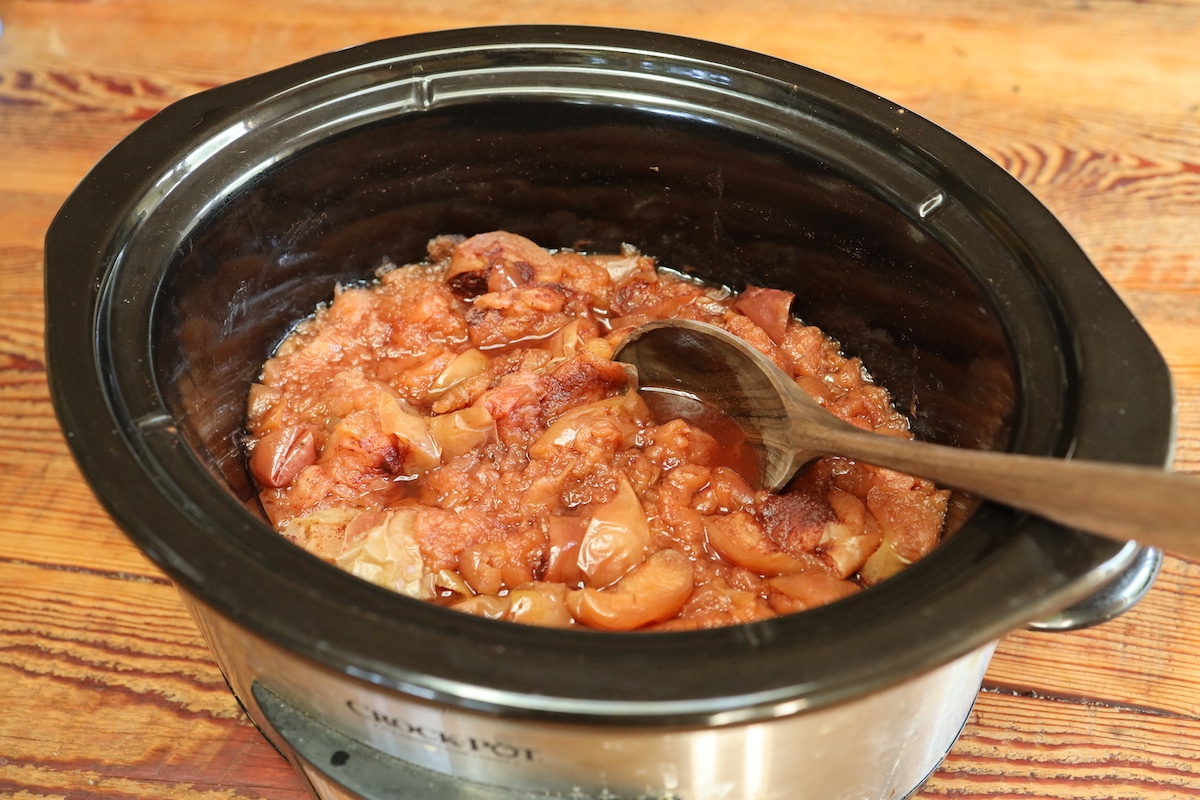
Instant Pot Method:
Place all of your apple sections in your Instant Pot with cinnamon, salt, and 1 cups of water. Pressure cook on manual for 5 minutes. Either quick release or let the pressure cooker naturally release. Drain any extra liquid you are apple to trying not to lose any of your apple goodness.
Step 3 – Blending Your No Peel Applesauce
This is an important step when making no peel applesauce. Many recipes call for hand mashing or using an immersion blender to turn those apples into sauce. However, when the peels aren’t removed (using either of to above cooking methods) there will still be a noticeable peel, which can lead to an undesirable gritty texture. If this doesn’t bother you, then have at it.
However, we prefer a completely smooth and creamy applesauce where you never knew the peels were there in the first place. In order to achieve this texture, a food processor or high-powered blender (we love our Vitamix) will be necessary.
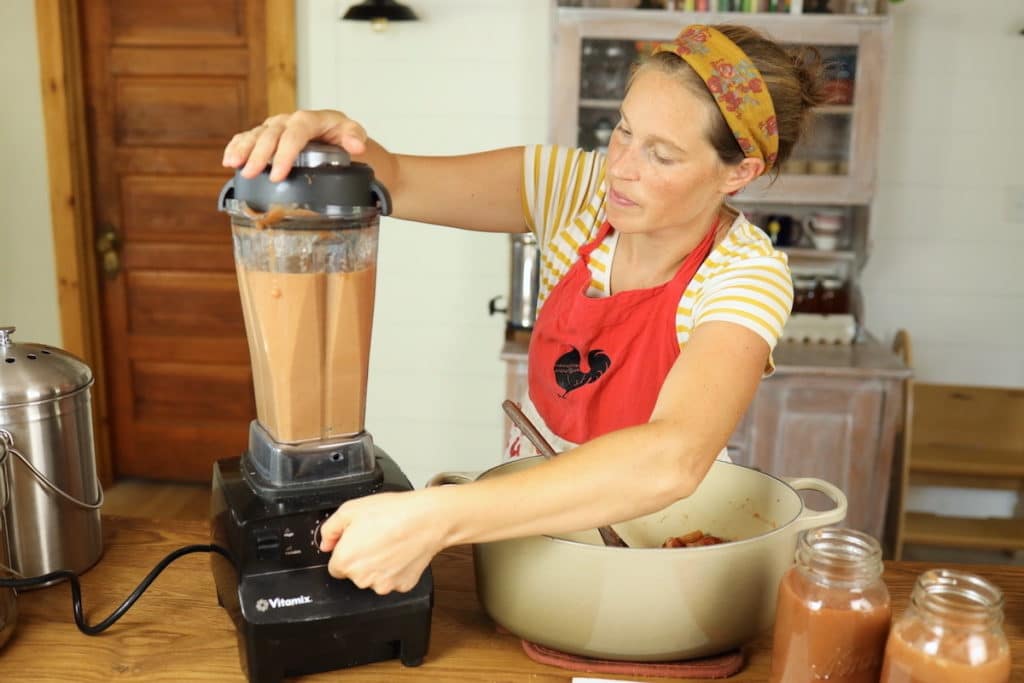
Simply scoop your apples into your blender or food processor and blend until a desirable texture is achieved. From there, store in the fridge for up to a week or can for long term use!
Some of the above links are affiliate links. This means we earn a small commission on qualifying purchases at no cost to you. We are so appreciative of your support!
Check out more of our favorite apple recipes:

Quick and Easy No Peel Applesauce for Crockpot or Instant Pot
It’s September and apple season is in full swing here in the Midwest. Every year, we like to take advantage of the abundant apple orchards in our area and stock up to can enough applesauce for the year. This simple no peel applesauce is our favorite way to make it, and whipping it up in either a slow cooker or crockpot or an instant pot make it mostly hands off.
Ingredients
- apples
- cinnamon
- salt
Instructions
Step 1 - Core and Chop Apples
Simply, core and chop the apples into large sections. I like to quarter them. From there you need to cook your apples.
Step 2 - Cook Apples
Crockpot Method:
If you are cooking the apples in a crockpot, place all of your cut apple sections into your slow cooker. Then add cinnamon and salt on top of the apples. Cook on low for 6-8 hours or high for 3-4. You know they are finished when the juices have been released and the apples are very soft and easily mashed.
Instant Pot Method:
Place all of your apple sections in your Instant Pot with cinnamon, salt, and 1 cups of water. Pressure cook on manual for 5 minutes. Either quick release or let the pressure cooker naturally release. Drain any extra liquid you are apple to trying not to lose any of your apple goodness.
Step 3 - Blending your no peel applesauce
This is an important step when making no peel applesauce. Many recipes call for hand mashing or using an immersion blender to turn those apples into sauce. However, when the peels aren’t removed (using either of to above cooking methods) there will still be a noticeable peel, which can lead to an undesirable gritty texture. If this doesn’t bother you, then have at it.
However, we prefer a completely smooth and creamy applesauce where you never knew the peels were there in the first place. In order to achieve this texture, a food processor or high-powered blender (we love our Vitamix) will be necessary.
Simply scoop your apples into your blender or food processor and blend until a desirable texture is achieved. From there, store in the fridge for up to a week or can for long term use!
Pin it for later!
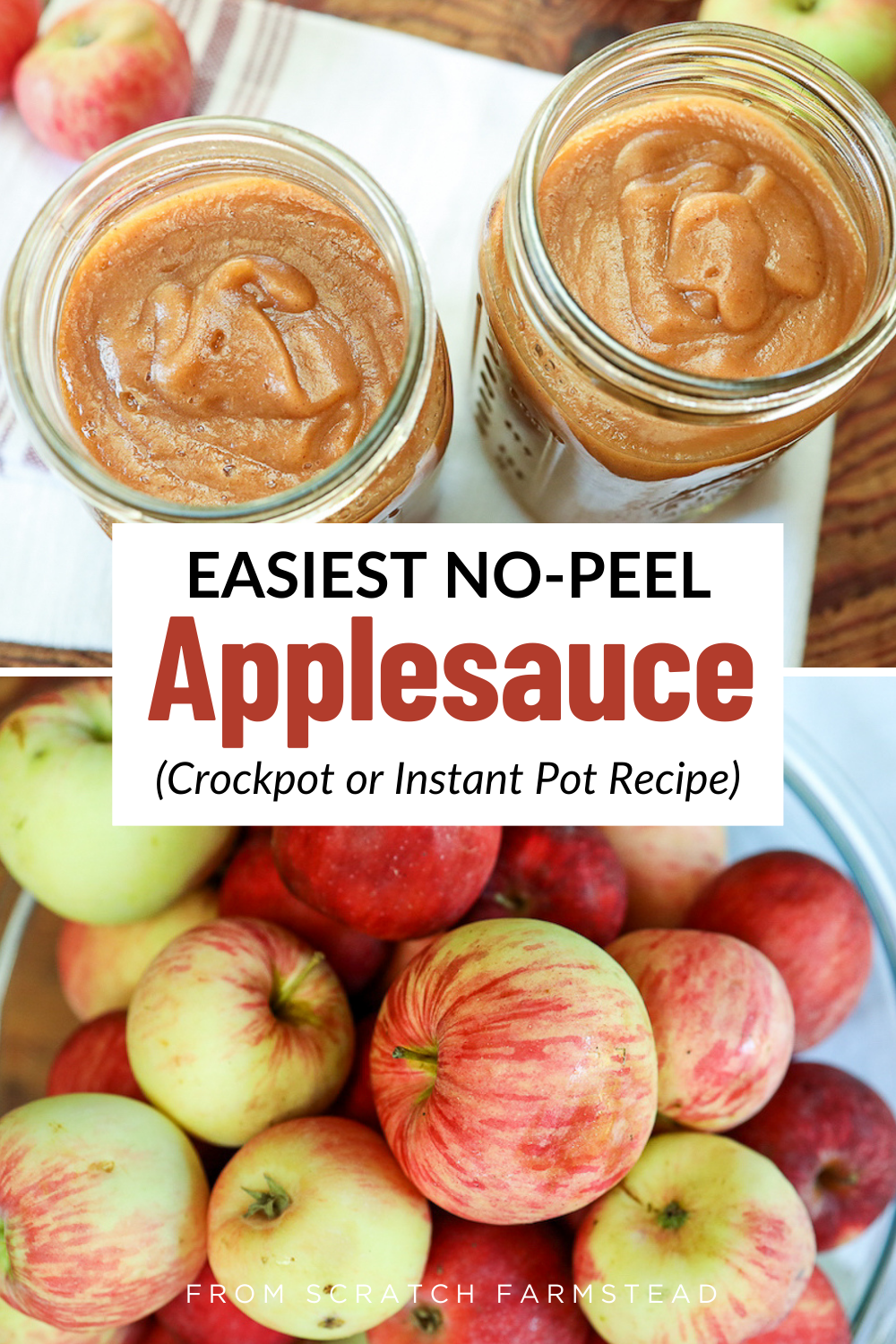

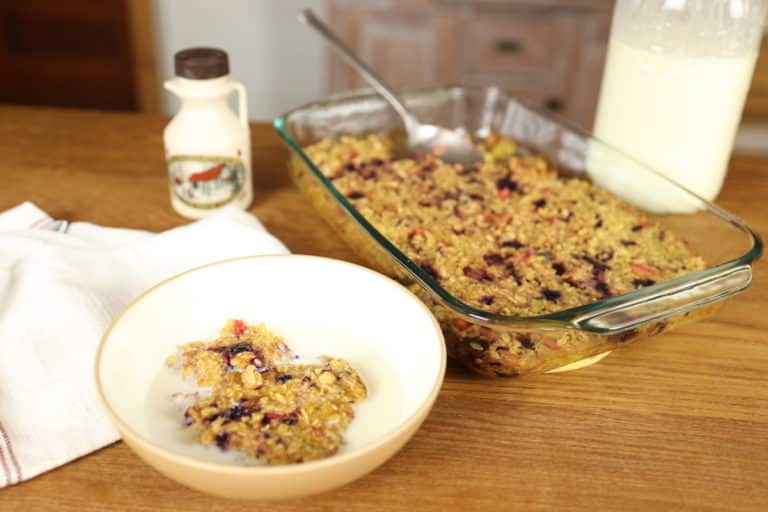
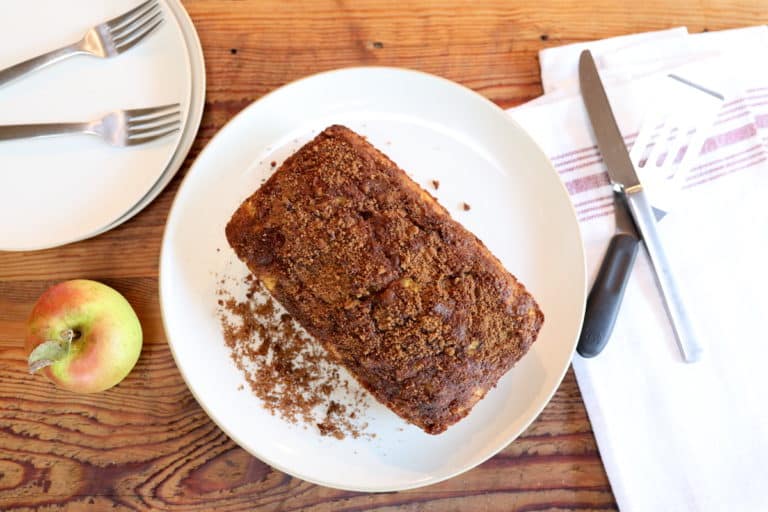
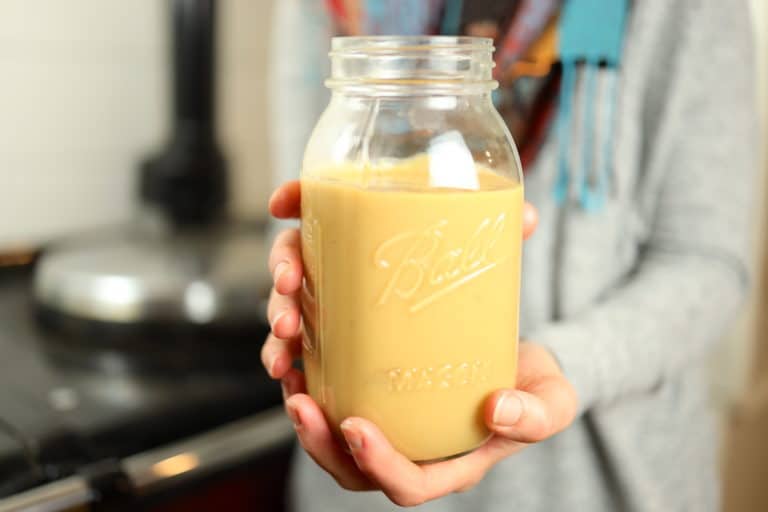
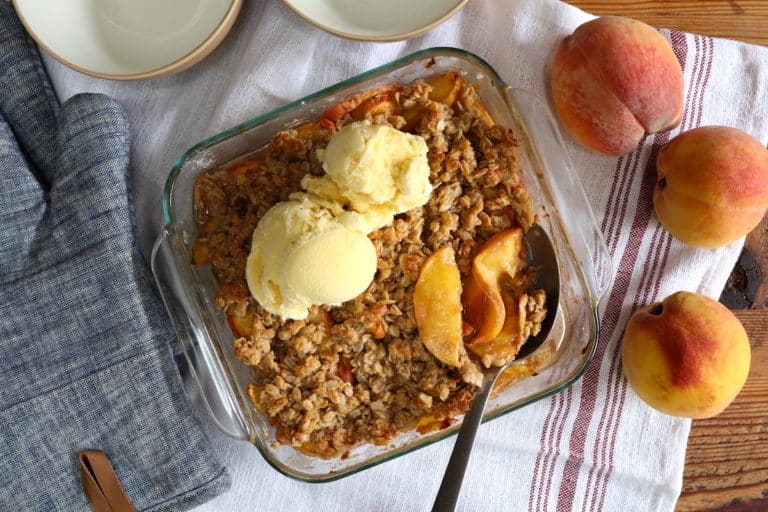
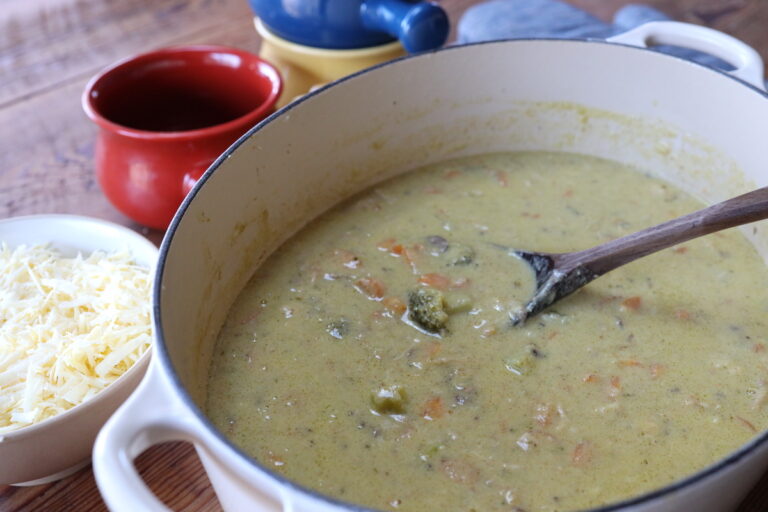
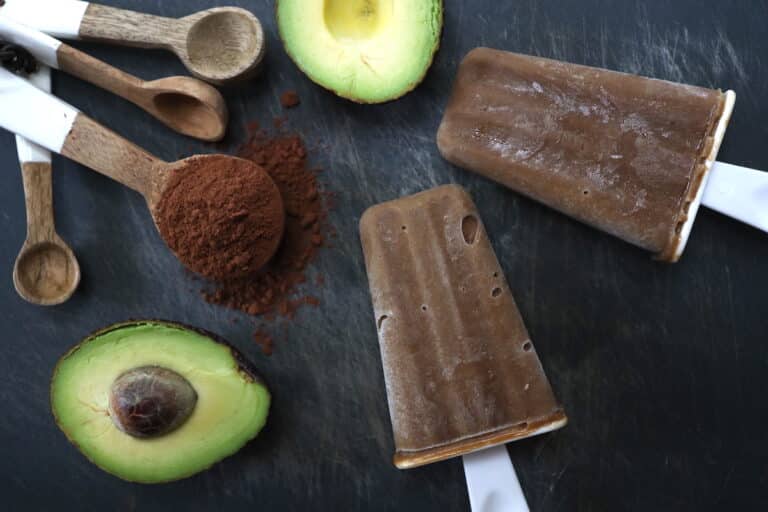
How much salt do you use?
And cinnamon
The salt is just a sprinkle, not a lot. Cinnamon would depend on your preferences and how many apples you are using. I probably do around 1 tbsp but don’t usually measure. I’ve also forgotten to add it before and it’s still yummy!
Delicious ! Follow the now enjoying some!
. I appreciate recipes that teach nutrition as wells organic no duration. Thank you for you knowledge.
Thanks for sharing! Glad you are enjoying it!
How full would I fill quart jars and how long would I water bath can this for? Thank you! All the recipes I’ve tried from your channel have been phenomenal!
Hi! Water bath should be processed for 20 minutes for quarts and leave at least a 1/2″ of head space. Happy canning!
How long would you water bath if you’re using pint jars. Thank you so much for sharing your knowledge with us
Hi! I’d water bath for 15 minutes. 🙂
The applesauce looks more like apple butter? I guess it depends on how long you puree it for, but I’m afraid if I cook it and put it in my Vitamix it’s going to look like apple butter. I mean it has to have some kind of applesauce texture and that look totally smooth like apple butter? I was just curious because I want to make applesauce. I’ve made apple butter before…
Hi! Maybe it’s more like an apple butter?? I think the difference is how long they are cooked and how much liquid is there (applesauce is typically cooked for less time so there is more liquid and a thinner product). Because apple butter tends to be cooked longer, it has deeper flavors from the carmelization and less liquid so it’s thicker.